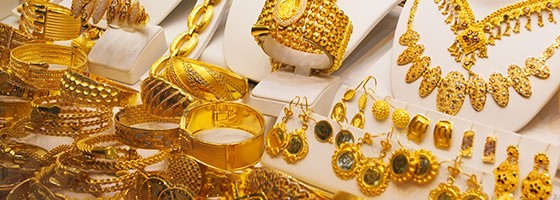
India has had a long-standing love affair with gold. At Indian weddings, some of the brides get so much gold jewellery that it weighs them down. There are upwards of 15 million weddings every year in India. According to the World Gold Council, upwards of 50% of Indian demand for gold is destined for weddings. Gold is ingrained in the culture and a part of their belief system. Not only is it integral to weddings, gifts of gold are common for anniversaries, birthdays and religious festivals. Gold jewellery is not regarded solely as adornment. It is a store of wealth. At one time it was widely accepted that women could not own anything except for their gold jewellery. That custom still prevails outside the major cities.Gold has spanned centuries and millennia in India.
So when the government, in an attempt to boost revenues, imposed a 1% excise duty on jewellery produced and sold within the country the jewellers, led by the All India Gems & Jewellery Trade Federation, started a 3-day work stoppage. This wasn’t the first time that had happened. Back in 2012 jewellers closed their shops for three weeks. In 2012 the government backed down. India already has an import tax and almost all the bullion consumed in the country is brought in from abroad. In 2015 India consumed 947 tonnes. Only China exceeded that total. Between them, China and India consume almost 44% of total global demand.
On January 1, 2016 the Indian government introduced a requirement that everyone must quote the permanent account number (PAN) for all transactions above rupees 2 lakh. That means all sales and purchases of goods and services, including electronics, foreign holidays, and luxury items (including gold jewellery), must be reported. The purpose, of course, is an attempt to curb the black market and set up audit trails for the taxman in an effort to capture more taxes. PAN was already in effect for all financial transactions, car purchases and immovable property.
India’s love affair with gold causes economic dislocations. While the government has a problem with that, the people do not. The people believe that the financial system is stacked against them. It is estimated that only about a third of Indians have bank accounts, although that is growing. Rates of return at the banks are not high, and inflation is usually higher. Opening a bank account is not easy. For many poor Indians, gold is money and can act as collateral when there is a need to borrow.
Low rates allow governments and corporations to borrow cheaply, but it doesn’t help the average saver. So Indians hold gold instead of bank accounts. For them it is store of wealth, and a way to avoid taxes as well. It also helps them get around bureaucratic red tape. And then there are the weddings, the festivals, and the offerings at temples. India consumes a lot of gold.
As to the dislocations, since India imports almost all its gold it, contributes to a current account deficit. Despite controls on gold imports, the current account deficit has actually narrowed in recent years. Gold diverts savings out of the banking system. India may have a high savings rate on par with many Asian countries, but a big chunk of those savings is diverted into physical assets such as gold, instead of into the banking system where the banks could use the funds to lend out.







